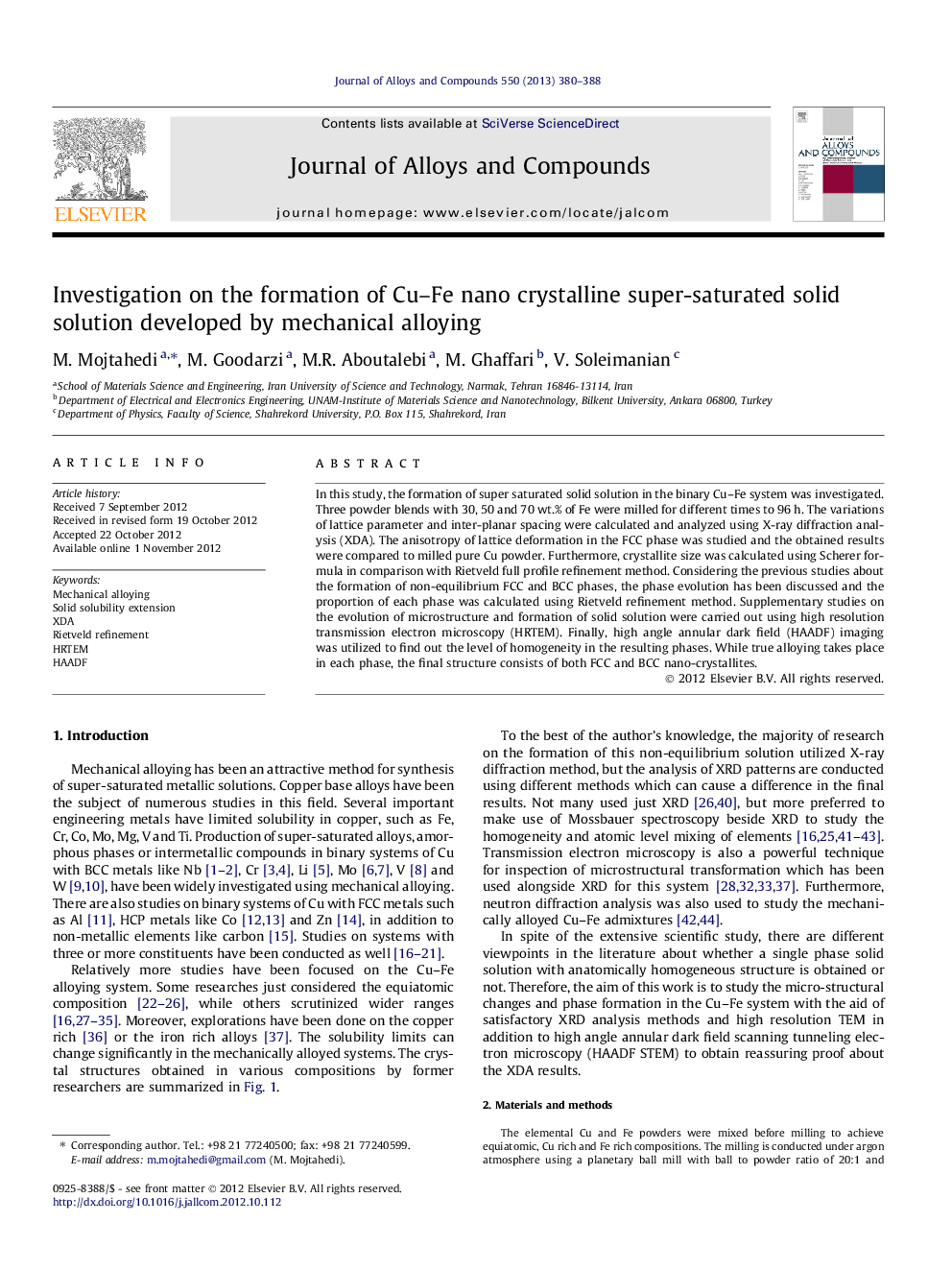| Article ID | Journal | Published Year | Pages | File Type |
|---|---|---|---|---|
| 1615101 | Journal of Alloys and Compounds | 2013 | 9 Pages |
In this study, the formation of super saturated solid solution in the binary Cu–Fe system was investigated. Three powder blends with 30, 50 and 70 wt.% of Fe were milled for different times to 96 h. The variations of lattice parameter and inter-planar spacing were calculated and analyzed using X-ray diffraction analysis (XDA). The anisotropy of lattice deformation in the FCC phase was studied and the obtained results were compared to milled pure Cu powder. Furthermore, crystallite size was calculated using Scherer formula in comparison with Rietveld full profile refinement method. Considering the previous studies about the formation of non-equilibrium FCC and BCC phases, the phase evolution has been discussed and the proportion of each phase was calculated using Rietveld refinement method. Supplementary studies on the evolution of microstructure and formation of solid solution were carried out using high resolution transmission electron microscopy (HRTEM). Finally, high angle annular dark field (HAADF) imaging was utilized to find out the level of homogeneity in the resulting phases. While true alloying takes place in each phase, the final structure consists of both FCC and BCC nano-crystallites.
► The deformation of the mechanically alloyed Cu–Fe powder is anisotropic. ► The Rietveld method is more proper and results in smaller crystallite size than the Scherer and Williamson–Hall methods. ► A dual phase super saturated solid solution achieved after 96 h of milling of the mixtures with 30, 50 and 70 wt.% of Iron. ► A final proportion of approximately 85% FCC and 15% BCC structure obtained in all of the applied compositions.
